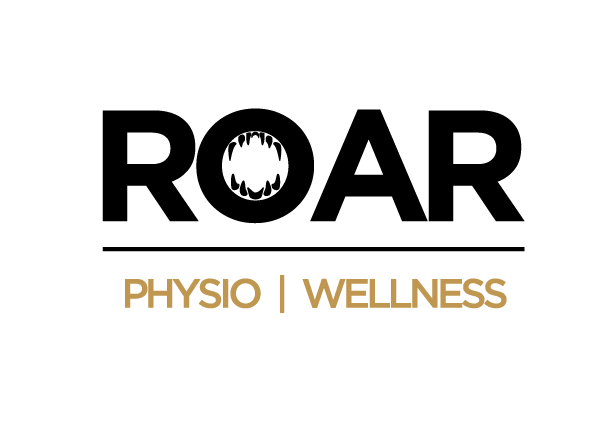Benign paroxysmal positional vertigo (BPPV) is one of the most common causes of dizziness and vertigo, often making everyday movements uncomfortable and disorienting. This condition occurs when small calcium crystals in the inner ear become dislodged, sending incorrect signals to the brain and causing symptoms like sudden dizziness, balance problems, and nausea. BPPV may not be dangerous, but it can significantly impact your quality of life. Fortunately, physiotherapy offers a highly effective, non-invasive solution to treat BPPV and help restore balance. In this guide, we will explore what BPPV is, how physiotherapy can help, and the techniques used to provide relief.
What is BPPV?
BPPV is a disorder of the inner ear that leads to short episodes of vertigo, a feeling as if the room is spinning. The condition is caused by dislodged calcium carbonate crystals (otoconia) that move into the ear’s semicircular canals. When you change the position of your head, these crystals shift, causing abnormal signals to be sent to your brain, leading to dizziness or imbalance. BPPV episodes can be triggered by simple movements such as lying down, turning your head, or sitting up. Though not dangerous, BPPV can severely affect daily activities, making it challenging to function normally. Symptoms of BPPV include sudden episodes of vertigo, nausea or vomiting, balance problems, and dizziness that occurs with changes in head position, among others.
The Role of Physiotherapy in Treating BPPV
Physiotherapy is one of the most effective non-invasive treatments for BPPV, offering a targeted approach to repositioning the dislodged crystals in the inner ear. The goal is to restore balance and alleviate the vertigo and dizziness that individuals experience. Here’s how physiotherapy can help:
- Repositioning the Crystals: The main objective of physiotherapy is to guide the displaced calcium crystals back to their proper location in the inner ear. Specific head and body movements help achieve this, allowing the crystals to leave the semicircular canals and stop triggering vertigo.
- Non-Invasive and Drug-Free: Physiotherapy is a natural treatment option that doesn’t rely on medications or surgery. By using precise physical maneuvers, physiotherapists can treat the root cause of BPPV without side effects or invasive procedures.
- Quick Relief: Many people experience significant symptom relief after just one or two physiotherapy sessions. The effectiveness of the maneuvers used in vestibular physiotherapy for BPPV allows individuals to return to their daily activities much sooner compared to other treatments.
- Improving Balance and Mobility: Beyond treating vertigo, physiotherapy focuses on improving overall balance and coordination. This is particularly beneficial for people who may have developed balance issues due to frequent BPPV episodes.
- Education and Home Exercises: Physiotherapists not only provide in-clinic treatments but also educate clients on exercises they can perform at home to maintain their progress. These home exercises help prevent future episodes of BPPV and strengthen the vestibular system over time.
By combining hands-on maneuvers with balance rehabilitation and client education, physiotherapy provides an effective, holistic approach to managing and overcoming BPPV.
Physiotherapy Techniques for Treating BPPV
Several physiotherapy techniques are commonly used to treat BPPV, each designed to move the dislodged crystals in the inner ear back to their proper position. The most effective techniques include:
- Epley Maneuver: This is the most widely used technique to treat BPPV. The physiotherapist guides the client through a series of head and body movements designed to shift the crystals out of the semicircular canals. The Epley maneuver typically provides immediate relief after just one or two sessions.
- Semont Maneuver: This technique involves moving the individual quickly from one side to the other to dislodge the crystals and return them to their correct position. The Semont maneuver is effective for people who may not respond to the Epley maneuver.
- Brandt-Daroff Exercises: These exercises are often prescribed as home exercises for people to perform daily. They involve repeated movements to help reposition the crystals and alleviate dizziness.
- Vestibular Rehabilitation Exercises: In addition to specific maneuvers, physiotherapists may incorporate vestibular rehabilitation exercises. These exercises aim to improve balance and reduce dizziness by training the brain to adapt to the abnormal signals sent by the inner ear. Vestibular exercises may include head and eye movements, balance training, and coordination exercises.
Each technique is selected based on the individual’s symptoms and response to treatment. Physiotherapists monitor progress to ensure the treatment is effective and adjust the approach as needed.
How Long Does Physiotherapy Treatment for BPPV Take?
The duration of physiotherapy treatment for BPPV varies depending on the severity of the condition and how well an individual responds to treatment. In many cases, people experience significant improvement after just one or two sessions, particularly when maneuvers like the Epley or Semont techniques are used. However, for some individuals, additional sessions may be required to fully resolve symptoms.
For people who need longer treatment or who experience recurring episodes of BPPV, ongoing physiotherapy may involve balance exercises and vestibular rehabilitation. These exercises can be performed at home and help prevent future episodes of dizziness or imbalance.
On average, most people see a marked improvement in their symptoms within a few weeks of starting physiotherapy. Your physiotherapist will assess your progress regularly and make adjustments to your treatment plan to ensure optimal recovery.
Get Your Roar Back
Physiotherapy Sessions for BPPV: What to Expect
A physiotherapy session for BPPV is designed to be a gentle yet effective process aimed at resolving the vertigo by repositioning the displaced crystals in the inner ear. Here’s what you can expect during a typical session:
- Initial Assessment: The physiotherapist will start by taking a detailed medical history and assessing your symptoms. They may perform specific tests, such as the Dix-Hallpike test, to determine the severity of your BPPV and the specific ear affected.
- Treatment Maneuvers: Based on the assessment, the physiotherapist will guide you through specific repositioning maneuvers such as the Epley or Semont maneuver. These movements are gentle but precise, and they aim to shift the crystals back to their correct position. You may experience some temporary dizziness during the treatment, but this is a normal part of the process.
- Post-Treatment Guidance: After completing the maneuver, your physiotherapist may advise you to stay in an upright position for a short period to allow the crystals to settle. You’ll also receive instructions on avoiding certain head movements for the rest of the day to prevent disturbing the newly repositioned crystals.
- Follow-Up and Progress Monitoring: Depending on your response to the initial session, your physiotherapist may recommend follow-up visits to ensure that the treatment is working effectively. They may also evaluate your balance and coordination to determine if additional vestibular rehabilitation exercises are needed.
Curing BPPV: Can it Come Back After Physiotherapy?
While physiotherapy is highly effective in treating BPPV, it’s important to understand that BPPV can return in some cases. For many people, the condition resolves after successful physiotherapy treatment, and they may never experience vertigo again. However, there is a possibility that BPPV can recur, especially in individuals who have a history of inner ear issues or are more prone to balance disorders.
BPPV recurrences can happen weeks, months, or even years after treatment. Fortunately, recurring episodes of BPPV can typically be managed effectively with the same physiotherapy maneuvers that were used initially, such as the Epley or Semont maneuver. Even though BPPV can return, it is a manageable condition, and ongoing physiotherapy or home exercises can help prevent frequent recurrences.
In terms of a permanent cure, while physiotherapy can provide long-lasting relief, there is no guaranteed permanent cure for BPPV. The key is early intervention and consistent treatment to reduce the frequency and severity of symptoms if they do recur.
Managing BPPV: Exercises You Can Do at Home
There are several exercises you can do at home to help manage BPPV and reduce the likelihood of recurrence. Home exercises are especially useful in between physiotherapy sessions or after treatment has been completed. Some commonly recommended exercises include:
- Brandt-Daroff Exercises: These exercises are designed to reposition the crystals in your inner ear by moving your head and body through specific positions. You typically perform these exercises by sitting upright, then quickly moving to one side while lying down, holding the position for 30 seconds, and repeating on the other side. Doing this regularly can help manage symptoms and prevent future episodes.
- Vestibular Rehabilitation Exercises: These exercises focus on improving balance and coordination. They often include head and eye movements, balance training, and visual fixation exercises that help your brain adapt to the abnormal signals caused by inner ear dysfunction.
- Modified Epley Maneuver: Some people are taught how to perform a simplified version of the Epley maneuver at home if they feel the onset of BPPV symptoms. This can be particularly helpful in managing sudden episodes of vertigo.
Before starting any home exercise routine, it’s important to consult your physiotherapist to ensure that the exercises are appropriate for your specific condition. Regular practice of these exercises can help maintain the benefits of physiotherapy and reduce the chances of BPPV returning.
Let Us Help You Find Your Balance Again
If you’re struggling with the frustrating symptoms of BPPV, physiotherapy can provide quick and effective relief through targeted techniques that restore balance and alleviate dizziness. From specialized maneuvers like the Epley and Semont techniques to at-home exercises, physiotherapy offers a safe, non-invasive way to treat and manage BPPV.
At Roar Physio | Wellness, our team is here to guide you through a personalized treatment plan designed to help you regain your balance and improve your quality of life. Contact us today to schedule an appointment and take the first step toward lasting relief from BPPV!

